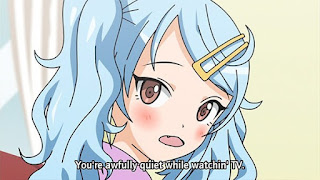If westerners can discern their cultural diversity from Asian people, and even the Asians themselves notice such things with their fellow Asian people, then that doesn’t stop the Japanese from being able to tell apart an Osakan from a non-Osakan. Boku no Imouto wa Osaka-okan, lit. My Sister is an Osaka Momma, is a short series of 12 3-minute episodes that dives into just that, giving us fun insights about what makes Osaka what it is.
Ishihara Namika, after having lived with relatives in Osaka for ten years, goes back to her family in Tokyo. She reunites with her brother Kyousuke. To his surprise, she had already become an energetic Osaka girl. Osaka is Japan’s third largest city and is famous for its unique subculture even to the locals- it’s also known to be the gourmet capital of Japan. People can usually tell if they’re Osakan with their Kansai dialect and accent, mostly distinguishable with their “nan-ya” which can translate to many things depending on how one says it.
Each episode contains three slice-of-life scenarios that would all end with educational–ish flash cards titled “Osaka Rules”. This time, in episode one, the siblings argue about how coffee and milk is called in Tokyo and in Osaka. Namika gets irritated with how words are differently used.
So this lesson goes: Usually, ‘aisu-koohii’ and ‘milku’ are the Japanese slang terms for iced coffee and milk, but Namika argues that it should be ‘reico‘ and ‘fresh‘ as it is called in Osaka. ‘Reico‘ is the combined word for ‘rei‘ (cold) and coffee. Namike wants it ‘fureshu‘ only because it sounds better than ‘milku.‘
Another Osaka Rule is that they are loud TV viewers– they keep talking back to it like they’re having a owarai kombi (double act) and they’re playing the tsukkomi (straight man.)
Oh yeah, here are samples of the Osaka Rule flash card at the end of every scenario:
Here’s a favorite:
Here’s the last rule I’m going to post, and a very kindhearted and generous one at that:
Although complaining to a restaurant reflects from them poor service, Osakans do this with good intent so the establishment can correct themselves as soon as possible, avoiding the possibility of the mistake happening again to other customers. Even after experiencing bad service, they don’t forget to say thanks when they leave.
Overall, nothing much to expect from this anime except for the fact that it is a 40-minute comic and educational fun ride lightly tackling the subcultural differences of the Osaka subculture. Indeed a must-watch!

























0 Comments